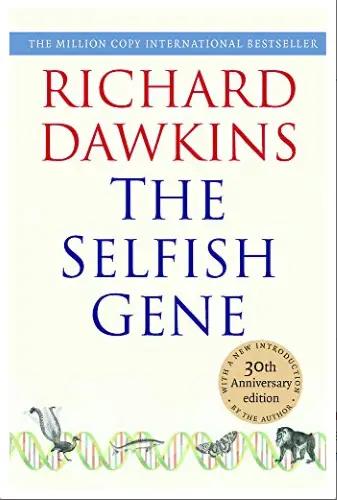The Selfish Gene
Book Author: Richard Dawkins
Summary reviewed by:
Terrence Timmons
Terrence Timmons
Analyst
Bachelor of Arts (BA), University Of California, Santa Barbara 2019
With over 4 years of experience as an analyst. Terrence Timmons is committed to analyzing summaries without compromising on quality.
The Selfish Gene: Summary
Unleash the power of your DNA as you discover the revolutionary theory that redefines what it means to be alive! Richard Dawkins' groundbreaking book, "The Selfish Gene", revolutionizes our understanding of evolution and life as we know it.
The central thesis of the book is that the fundamental unit of selection in evolution is not the species, not the group, and not even the individual organism, but the gene itself. Genes, according to Dawkins, are 'selfish' in the sense that they will propagate their own kind, even at the cost of the organism they inhabit.
Dawkins postulates a gene's-eye view of evolution, painting a picture where survival hinges upon a ruthless competition among genes for representation in future generations.
This leads to unexpected alliances between genes, forming a 'selfish cooperative', and constructing intricate survival machines - what we call organisms. Dawkins' theory elegantly weaves through complex biological concepts, introducing us to 'replicators' - the precursors of genes - and 'vehicles' - the bodies that genes control.
The author takes us on a journey through biology, game theory, and philosophy, crafting an overarching narrative that helps us understand how life forms adapt and evolve.
Dawkins also discusses 'meme' theory, suggesting cultural ideas themselves undergo a form of Darwinian selection, akin to genetic evolution.
His work debunks common misunderstandings about evolution, clarifying that a 'survival of the fittest' interpretation isn't about raw strength but about suitability and adaptability. "The Selfish Gene" is a fascinating exploration that compels us to question our perception of life, altruism, and evolution itself.
The Selfish Gene: Genres
Non-fiction
Popular Science
Evolutionary Biology
Genetics
Philosophy of Science
The Selfish Gene: Themes
Selfishness of Genes: Dawkins posits that genes are ‘selfish’ in the sense that they seek to replicate and survive, even at the detriment of the organisms they inhabit. For example, the peacock’s extravagant tail, which can be a disadvantage for survival, is explained as a ‘selfish’ trait that improves the gene’s chances of being passed on due to its appeal to peahens.
Altruism: The book explores the seeming contradiction of altruistic behavior from the perspective of the ‘selfish gene’. Dawkins explains this apparent paradox by introducing ‘kin selection’ and ‘reciprocal altruism.’ For instance, a bee’s suicidal sting can be understood as a selfless act to protect the gene it shares with its hive members.
Memes: Dawkins introduces the concept of ‘memes,’ units of cultural transmission that propagate similarly to genes. An example provided in the book is a catchy tune that spreads from person to person, much like a virus.
Survival of the Fittest: Dawkins refines the concept, emphasizing it’s not about physical strength, but adaptability. The use of game theory, such as the ‘Prisoner’s Dilemma,’ highlights how ‘tit for tat’ strategies can promote cooperation within a competitive environment.


The Selfish Gene
Date Published: 1976
Disclaimer: As an Amazon Associate I earn from qualifying purchases.



